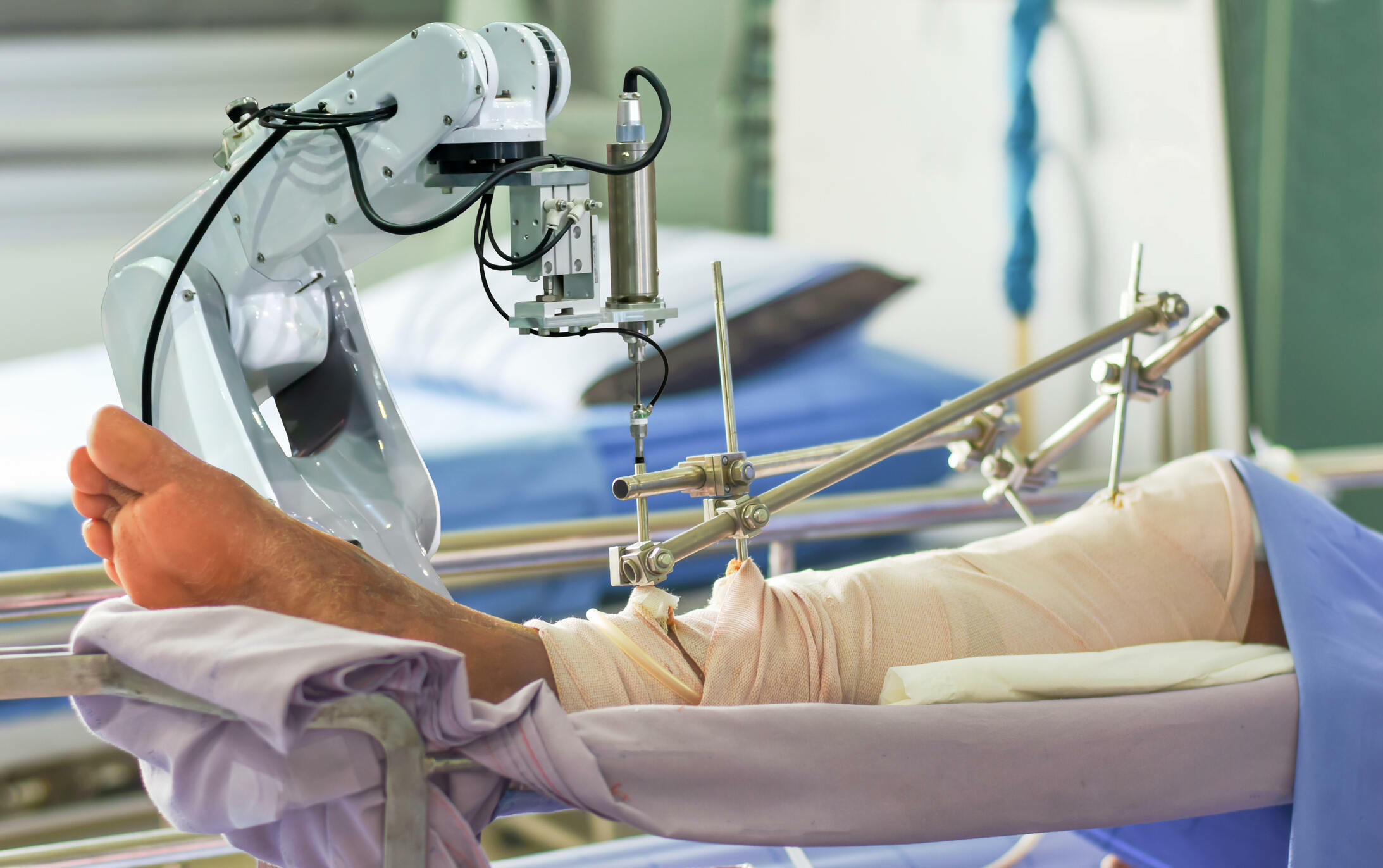- About us
- Departments
- Emergency Medicine
- Anaesthesiology & Critical Care
- Gastroenterology & Liver Transplant
- Dental & Cosmetic Surgery
- Oral & Maxillofacial Surgery
- Internal Medicine
- Diabetology
- General Surgery
- Geriatric Medicine
- Pulmunology
- Paediatrics & Neonatology
- Plastic & Reconstructive Surgery
- Rheumatology
- Urology & Andrology
- Endocrine Surgery
- Services
- Robotic Surgery
- Contact us
- Select Your Language
Robotic knee Replacement Surgery

Robotic knee Replacement Surgery
A regular knee replacement and a robotic knee replacement surgery are similar. A robotic Knee Replacement surgeon will remove any damaged knee tissue and replace it with a prosthetic joint. The difference is that a robotic arm aids in the process, enabling better precision. In more complicated situations, a robotically assisted knee replacement improves joint alignment and soft tissue balance around the knee.
You should prepare just as you would for any other surgery if you are having a robotic-assisted knee replacement.
Your knee replacement surgeon will review all of your alternatives, including robotic joint replacement if you are a good fit.
Who is eligible for a Robotic Knee Replacement?
You probably qualify for robotically assisted knee replacement if you qualify for traditional knee replacement. Discussing with your doctor is essential to determine whether knee pain treatment alternatives, such as surgery or non-surgical measures, are appropriate for you.
For even the most complicated knee joint problems, robotic knee replacements are the best option. Patients with the following conditions are included in this:
- Deformities in the femur after an injury
- Complex degeneration
- Hardware from previous surgeries
Benefits of Robotic Knee Replacement Surgery
When compared to traditional surgery, robotic-assisted knee replacement surgery has various advantages.
Improved surgical planning: Before and during operation, specific 3-D pictures are captured. With the aid of these photos, your surgeon may more precisely arrange the best kind and location of your replacement joint, guaranteeing a proper fit and size.
Increased accuracy: The skill of your orthopedic surgeon is enhanced by robotic technologies, allowing for more accurate planning, tissue removal, and implant placement.
Optimal joint alignment: Your surgeon can more accurately align and place your knee implant thanks to robotic technology. This reduces wear and friction on your new joint and helps to promote a more natural-feeling joint replacement






